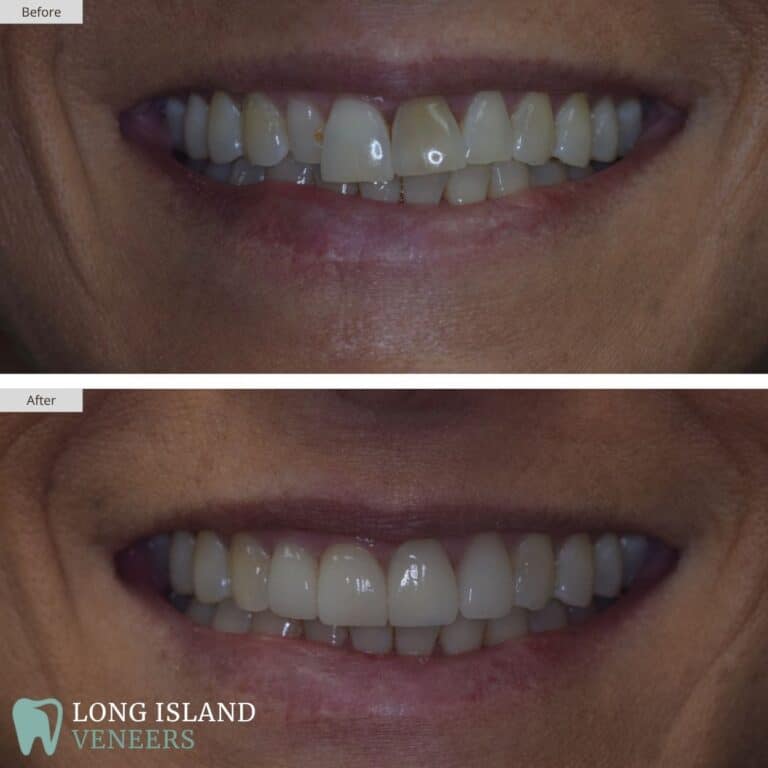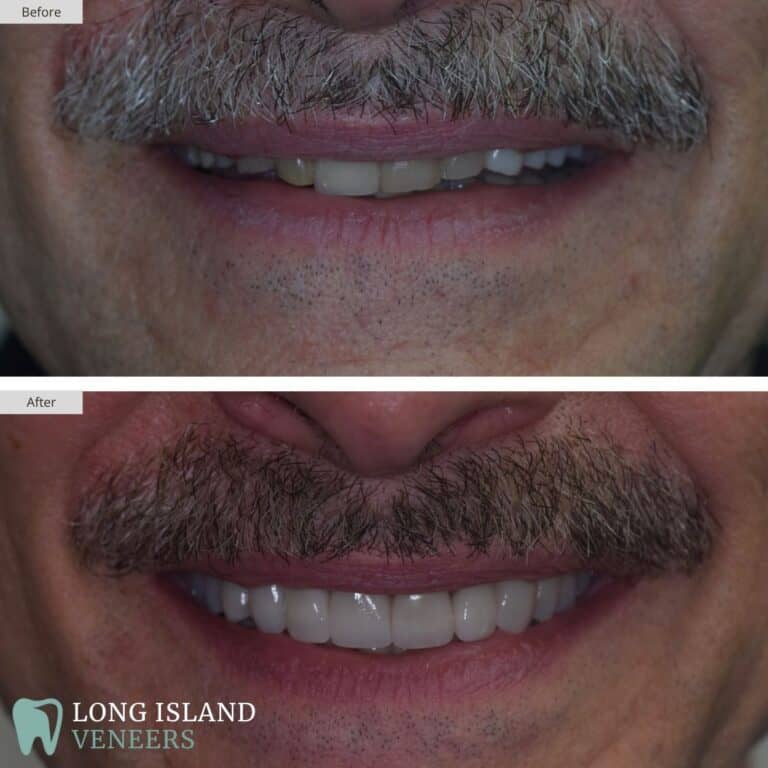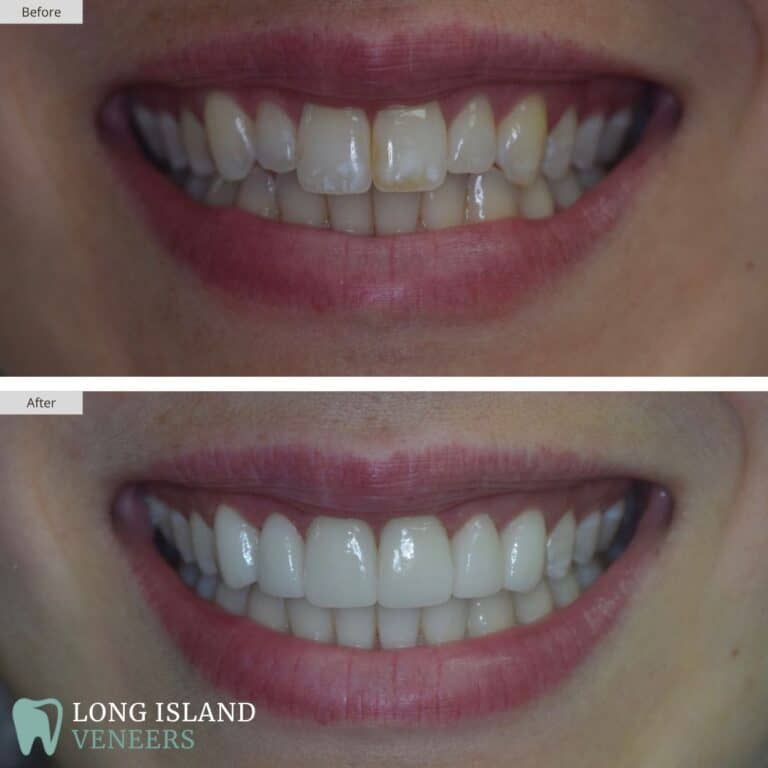This patient came to Long Island Veneers with a very specific concern. Years ago, she had a veneer placed on one of her front teeth. From the start, it never felt right. The shade was slightly off, the shape didn’t match the other teeth, and over time, it began to stand out more and more in photos and daily life.
She wasn’t looking for a dramatic makeover. In fact, her smile was otherwise healthy and well-maintained. But that one visible tooth had always made her self-conscious, and she was ready to finally fix it.
Understanding the Problem
Unlike full-arch cases or multiple-veneer transformations, this case centered on correcting a single veneer. At first glance, it might seem like a small adjustment, but making one front tooth look natural is often more challenging than placing a full set.
Challenges of a single veneer replacement:
- Color matching: The shade must perfectly match the surrounding natural teeth under various lighting conditions.
- Contour and edge alignment: Even a slight mismatch in shape can disrupt the entire smile line.
- Tooth position: The underlying alignment affects how the veneer fits and appears from different angles.
We needed to be precise, subtle, and strategic to make this work.

Starting with Alignment
Before addressing the veneer, we recommended a short Invisalign treatment to gently align her upper front teeth. While they weren’t severely crooked, small rotations and spacing issues were contributing to the uneven look.
The Invisalign phase lasted approximately six months and created a cleaner, more consistent arch. That gave us a stronger foundation for the veneer replacement and helped eliminate visual distractions from other areas of the smile.
Replacing the Veneer
Once alignment was complete, we turned our focus to the problematic front tooth. The original veneer was removed and replaced with a new one, designed to match her newly aligned smile in both color and form.
This time, we paid extra attention to:
- Shade blending: We used natural layering techniques to mirror the translucency of the adjacent incisor.
- Shape refinement: The new veneer was sculpted to mimic the subtle curves and edge angles of the opposite tooth.
- Surface texture: Micro-details were added to the veneer surface so it would reflect light like enamel.
The difference was immediate. What once stood out now blended in so well that even close friends and family couldn’t tell which tooth had been restored.
What Made This Case Unique
This patient didn’t need a full set of veneers or a major smile redesign. She simply needed one tooth to stop drawing attention. Her case is a perfect example of how a single correction, when done thoughtfully, can dramatically improve someone’s confidence.
We often meet patients who assume they need extensive treatment to fix a small issue. But sometimes, the smartest move is the most minimal one. This case shows that success is not always about volume, it’s about precision.
Long-Term Confidence
At her final visit, the patient shared how different she felt knowing her smile finally looked balanced. She no longer had to hide her teeth when laughing or posing for photos. The small change gave her a renewed sense of confidence and comfort in her everyday interactions.
Even more, she was proud of the fact that she had taken the time to get it done right. For years, she had tolerated a result that never felt quite like her. Now, that feeling was gone.
Why Subtle Corrections Matter
There’s an art to restraint in cosmetic dentistry. Knowing when to recommend minimal treatment and how to execute it well is just as important as designing a full smile makeover.
In this case, the combination of Invisalign to set the foundation and a carefully matched single veneer replacement created results that were seamless and long-lasting. The treatment respected the integrity of her natural teeth and preserved her original smile, only better.
At Long Island Veneers, we believe every smile deserves attention to detail, whether the case involves one tooth or twenty.






